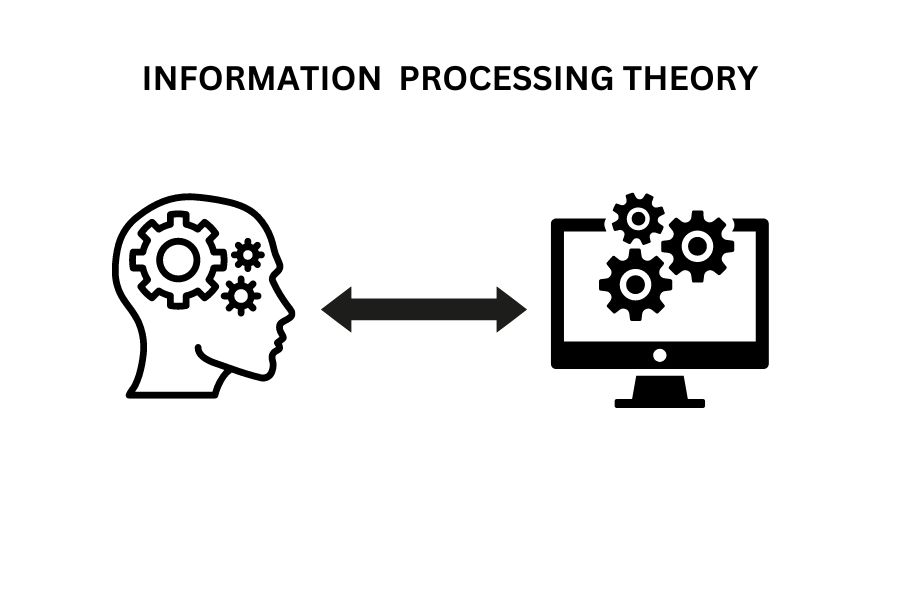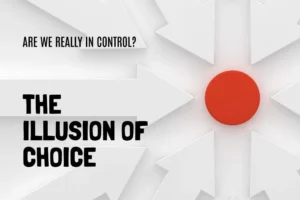Information Processing Theory is a foundational idea in cognitive psychology that describes the human mind as a complicated information-processing system similar to a computer. According to this idea, people use a variety of cognitive processes to encode, store, and retrieve information, which shapes their perceptions, thoughts, and behaviors.
At its foundation, Information Processing Theory stresses the active character of cognition, focusing on how people actively interpret and modify incoming information to construct meaning and make sense of their surroundings. This theory sheds light on how people gain knowledge, absorb information, and adapt to changing circumstances by delving into the basic mechanisms of perception, attention, memory, and problem-solving.
In this extensive study, we will delve into the complexities of Information Processing Theory and its practical applications in learning and cognition. We will investigate the inner workings of the human mind by unraveling the fundamental principles of cognitive psychology and deconstructing the core components of Information Processing Theory.
We will discover the systems that govern how people acquire, process, and retain information by investigating cognitive processes like as perception, attention, memory, and problem-solving.
Furthermore, we will look at how Information Processing Theory influences educational practices, cognitive therapies, and real-world applications, providing readers with actionable insights to improve their cognitive functioning and learning capacity.
Table of Contents
Importance of Understanding Cognitive Processes for Learning
Cognitive processes form the cornerstone of learning, impacting how people acquire, retain, and apply new information. Individuals can improve their cognitive capacities by studying cognitive psychology better.
Understanding cognitive processes enables individuals to better their study strategies, memory retention, and critical thinking abilities. Furthermore, it allows educators to create more effective instructional approaches and interventions that are personalized to individual learners’ requirements, resulting in a more conducive learning environment.
Understanding Cognitive Psychology
Introduction to Cognitive Psychology
Cognitive psychology is the scientific study of mental functions such as perception, attention, memory, and decision-making. It tries to comprehend how these mechanisms function and interact to influence human behavior and cognition.
Key Concepts and Theories
Cognitive psychology spans a wide range of significant concepts and theories, including Information Processing Theory, Schema Theory, and Cognitive-Behavioral Therapy. These theories offer frameworks for understanding how people perceive, interpret, and respond to information in their environment.
Role of Cognitive Processes in Daily Life
Cognitive processes shape our everyday lives, from interpreting sensory data to making complicated judgments. Understanding these processes allows people to acquire insights into their behavior and cognition, increasing self-awareness and promoting adaptive reactions to varied stimuli.
Related reading: Cognitive Triad: Unlock Growth with Essential Insights
Introduction to Information Processing Theory
What is Information Processing Theory?
According to Information Processing Theory, the human mind processes saves, and retrieves information in much the same way as a machine would. According to this idea, cognitive processes are divided into three stages: encoding (inputting information), storage (retaining knowledge), and retrieval. Similar to how a computer receives, saves, and retrieves data, the human mind alters incoming stimuli via various cognitive processes.
This theory highlights the role of attention, perception, memory, and problem-solving in cognitive function. It argues that information is processed systematically, with each stage influencing the next, ultimately defining human cognition and behavior.
Historical Background and Development
Information Processing Theory arose in the mid-twentieth century when psychologists attempted to comprehend the basic mechanisms of human cognition. Influential figures such as George Miller noted for his work on the capacity of short-term memory, and Ulric Neisser, who coined the phrase “cognitive psychology,” helped shape this theory.
Allen Newell and Herbert Simon’s work on computer models of human problem-solving helped provide the groundwork for Information Processing Theory. Their research focused on the similarities between human cognition and computer processing, emphasizing the sequential character of cognitive functions.
Information Processing Theory has changed over time, from early models centered on memory processes to more complete theories that include attention, perception, decision-making, and problem-solving.
Importance in The Field of Psychology and Education
Information Processing Theory has far-reaching implications for psychology, education, and cognitive neuroscience. This theory informs educational practices, cognitive therapies, and technological breakthroughs by shedding light on the cognitive processes involved in learning, problem-solving, and decision-making.
In education, material Processing Theory influences instructional design by stressing learning tactics such as chunking material, offering feedback, and encouraging active involvement. Understanding how people encode, store, and retrieve information allows educators to customize their teaching techniques to maximize learning outcomes.
Furthermore, Information Processing Theory supports cognitive therapies by identifying underlying processes of cognitive dysfunction and proposing strategies to improve cognitive function. Cognitive restructuring and attention training use this theoretical framework to address cognitive deficiencies linked with a variety of psychological diseases.
In cognitive neuroscience, Information Processing Theory provides a paradigm for investigating brain-behavioral interactions. Advances in neuroimaging techniques enable researchers to explore neural correlates of cognitive processes, revealing the brain bases of perception, memory, attention, and decision-making.
What are the 5 stages of information processing theory?
Attention: Focusing Cognitive Resources
Attention is a cognitive process that directs mental resources toward selected stimuli while disregarding others. It is important for perception, learning, and behavior.
Let’s take a closer look at attention in the table below:
| Selective Attention | We cannot attend to all stimuli in our environment at the same time. Selective attention enables us to concentrate on important information while blocking out unimportant distractions. This process is necessary for goal-directed behavior and efficient information processing. |
| Bottom-Up vs. Top-Down Attention | Bottom-up attention is triggered by salient characteristics of stimuli, such as brightness or loudness, which capture our attention involuntarily. Top-down attention, on the other hand, is led by our goals, interests, and expectations, and it deliberately directs attention to certain stimuli. |
| Attentional Control | Attention is a dynamic process that may be managed and directed in response to task demands and cognitive goals. Mindfulness meditation, for example, can improve attentional control by teaching people how to focus and maintain their attention throughout time. |
Perception: Interpreting Sensory Data
Perception is the brain’s processing of sensory data to create a coherent knowledge of the environment. It is not a passive process, but rather an active one based on sensory inputs, prior experiences, and expectations.
Here are some important aspects to consider in the table below:
| Sensation | This is the earliest stage in which sensory receptors detect stimuli from their surroundings, such as light, sound, taste, smell, and touch. The sensory signals are subsequently sent to the brain for processing. |
| Pattern Identification | The brain organizes and interprets sensory input by recognizing patterns including forms, colors, and sounds. This procedure aids in recognizing items and occurrences in the environment. |
| Perceptual Organization | When sensory information is received, the brain organizes it into meaningful wholes, which is known as Gestalt principles. These concepts include closeness, similarity, continuity, closure, and simplicity, which aid in combining materials to create coherent perceptions. |
| Top-Down Processing | Sensory inputs influence perception, but so do higher-level cognitive processes including expectations, beliefs, and motivations. Top-down variables can influence how we perceive and interpret sensory information. |
Encoding
This is the process of converting sensory inputs into memory-compatible formats. Encoding can occur in a variety of ways, including visual, auditory, and semantic processing. Deep, meaningful processing improves information encoding and retention.
Storage
Once encoded, information is saved in memory for subsequent retrieval. The Atkinson-Shiffrin model suggests three primary storage systems: sensory memory, short-term memory, and long-term memory. Each system has varying capacities and durations, with long-term memory having nearly limitless capacity and duration.
Retrieval
Retrieval is the process of gaining access to previously stored information when necessary. It can be modified by a variety of factors, including encoding context, retrieval cues, and memory trace strength. Strategies such as rehearsal, elaboration, and mnemonic devices can help to improve retrieval performance.
Related Reading: Cognitive Evaluation Theory: How It Helps You
What are the Components of Information Processing Theory?

Sensory memory, attention, short-term memory, long-term memory, and executive skills including cognitive control and metacognition are all interwoven components of information processing theory. These components work together to improve information processing and cognitive performance.
Sensory Memory
Some necessary information about sensory memory is given in the table below:
| Function | Sensory memory serves as the first stage of processing incoming sensory data. It temporarily stores sensory inputs in their original sensory form (e.g., visual, aural) for only a few seconds. |
| Duration | Sensory memory is very transient, lasting from milliseconds to a few seconds. |
| Capacity | It has a big capacity and can hold a lot of sensory information at once. |
| Example | When you briefly see an image or hear a sound before it fades away, your sensory memory is in action. For example, when viewing a movie, sensory memory helps you to feel a continuous flow of motion even when the visuals are shown in individual frames. |
Short-Term Memory (STM)
Some necessary information about short-term memory (STM) is given in the table below:
| Function | Short-term memory is responsible for briefly storing and modifying information that is currently being processed. It allows people to actively deal with knowledge, such as solving issues or making decisions. |
| Duration | STM normally retains knowledge for a short period, usually 15 to 30 seconds without rehearsal. |
| Capacity | It has a limited capacity, retaining approximately 5 to 9 items of information at a time, and is commonly referred to as the “magic number seven, plus or minus two.” |
| Example | Trying to remember a phone number for long enough to dial it is an example of short-term memory. If you do not rehearse the number, it will most certainly go from your memory after a short period. |
Long-Term Memory (LTM)
Some necessary information about long-term memory (LTM) is given in the table below:
| Function | Long-term memory is responsible for storing knowledge over long periods, ranging from minutes to a lifetime. It enables people to retain knowledge, experiences, and abilities gained throughout time. |
| Types | Long-term memory can be classified into two types: explicit (declarative) memory, which contains facts and events, and implicit (procedural) memory, which includes skills and habits. |
| Capacity | LTM has an enormous capacity, theoretically limitless, capable of storing a lifetime’s worth of data. |
| Example | Long-term memory includes things like remembering your childhood home address or learning how to ride a bike. These memories are preserved for a long time and can be retrieved when needed, often years or decades later. |
Cognitive Control
This refers to the ability to control and direct cognitive processes to attain specified goals.
| Proactive Control | It entails anticipating and planning for impending tasks to optimize cognitive resources |
| Reactive Control | It involves adapting cognitive processes to changing environmental demands or unforeseen events. |
Metacognition
This entails reflecting on one’s thought processes and observing cognitive activities.
| Metacognitive Awareness | It involves recognizing one’s knowledge, understanding, and problem-solving skills. |
| Metacognitive Control | It involves regulating cognitive processes through self-assessment and feedback to improve performance. |
What are The Advantages of Information Processing Theory?
Educational Implications of Information Processing Theory
information-processing approach, learners actively process information via a variety of mental processes such as attention, perception, encoding, storage, and retrieval. This theory has an impact on teaching methods and curriculum design in educational contexts because it emphasizes the necessity of actively engaging learners, enabling deep information processing, and developing transferable skills that can be utilized in real-world circumstances.
Teachers, for example, may use active learning approaches such as group discussions, problem-solving activities, and hands-on experiments to encourage students to thoroughly analyze knowledge and find meaningful connections.
Curriculum designers can build learning experiences to encourage the transfer of information and skills to new contexts, allowing students to apply what they’ve learned in the classroom to real-world circumstances.
Cognitive Interventions
Cognitive therapies target cognitive functions such as memory, attention, and executive functioning skills to improve cognitive ability and quality of life. These interventions are especially beneficial to those with cognitive impairments, learning disabilities, or age-related cognitive decline.
Cognitive therapies may include cognitive training programs, which entail regular practice of tasks aimed at improving certain cognitive skills. For example, a memory training program may include activities to improve memory encoding, storage, and retrieval. Individuals may also adopt memory strategies, such as mnemonic devices or visualization techniques, to help them remember knowledge more effectively.
Attentional control exercises, such as mindfulness meditation or attention training tasks, are designed to help people focus their attention and filter out distractions. These techniques can be especially beneficial for people who have attention deficiencies or difficulty controlling their attention.
Examples of Information Processing Theory
Information-processing approach has applications in a variety of fields, including education, clinical psychology, and human-computer interaction design.
Adaptive learning systems in education use Information Processing Theory algorithms to personalize learning experiences for each learner. These technologies analyze students’ learning behaviors and modify the presentation of material to improve learning outcomes.
Cognitive-behavioral treatment (CBT) in clinical psychology is based on Information Processing Theory. CBT enables people to identify and address dysfunctional thought patterns, as well as create more effective coping techniques. CBT, which targets cognitive processes such as attention, memory, and perception, can help people overcome a variety of psychological illnesses, including anxiety and depression.
Human-computer interaction design ideas are influenced by cognitive psychology studies, such as information-processing approach. Designers strive to develop straightforward and easy-to-use interfaces while keeping users’ attentional restrictions, memory constraints, and information processing capacities in mind.
Maximizing Learning with Information Processing Theory

Strategies for Optimizing Information Processing
Strategies for optimizing information processing are given in the table below:
| Attentional Control Techniques | These include focusing and keeping attention on relevant information while screening out distractions. For example, you can utilize strategies like focused attention or selective attention to focus on specific components of a task or information. |
| Mnemonic Devices | Mnemonic devices are memory enhancers that help to encode information in a more memorable format. This could include using acronyms, visualization techniques, or rhymes to connect new material to prior knowledge or mental imagery. |
| Cognitive Rehearsal | Cognitive rehearsal refers to cognitively practicing or rehearsing material to reinforce learning. This could include mentally reviewing material before studying, envisioning scenarios based on the information, or mimicking problem-solving tasks. |
Enhancing Memory Retention and Recall
Strategies for enhancing memory retention and recall are given in the table below:
| Spaced Repetition | Spaced repetition is the process of reviewing knowledge at more frequent intervals throughout time. This strategy takes advantage of the spacing effect, which indicates that spacing out study periods results in higher long-term recall than massed practice. |
| Retrieval Practice | Retrieval practice entails actively retrieving material from memory rather than studying it passively. Quizzes, flashcards, and self-testing help students develop their memory retrieval pathways, making it simpler to recall knowledge later. |
| Elaborative Encoding | Elaborative encoding entails linking new information to prior knowledge or making meaningful connections between concepts. Learners have a better grasp and memory retention by expanding on the topic with associations, examples, or explanations. |
Improving Attentional Focus and Concentration
Strategies for improving attentional focus and concentration are given in the table below:
| Mindfulness Meditation | Mindfulness meditation entails developing awareness of the current moment without judgment. Individuals who practice mindfulness techniques can strengthen their attentional muscles, become more aware of distractions, and enhance their capacity to refocus attention when necessary. |
| Attention Training Games | These are systematic workouts or games that aim to improve attention and focus. Attentional blink tasks, in which people must quickly identify targets amid distractions, or sustained attention tests, such as the Stroop test. |
| Environmental Modifications | Making modifications to the environment can assist in eliminating distractions and creating a more suitable setting for concentrated work. This could include reducing noise, improving lighting, arranging workspaces, or managing distractions with equipment such as noise-canceling headphones or productivity applications. |
Tips for Applying Information Processing Theory
Implementing Effective Study Techniques
Here are some scientific and research based tips from Basic of Psychology for implementing effective study techniques in the table below:
| Active Engagement | This means actively participating in the learning process rather than passively taking information. Techniques like summarizing material in your own words, asking clarifying questions, and teaching concepts to others promote active involvement. |
| Retrieval Practice | This strategy entails actively retrieving material from memory rather than merely rereading it. Examples include self-quizzing, employing flashcards, and retaining material without consulting your notes. |
| Distributed Practice | Instead of cramming all of your studying into a single session, the distributed practice includes spreading out your study sessions throughout time. This improves retention and understanding of material by reinforcing learning with repeated exposure. |
Utilizing Cognitive Tools and Resources
Here are some scientific and research based tips from Basic of Psychology for utilizing cognitive tools and resources in the table below:
| Digital Flashcards | You can make electronic flashcards using tools like Anki or Quizlet and review them on your PC or smartphone. They frequently use spaced repetition algorithms, which help prioritize learning based on the complexity of each card and your previous performance. |
| Concept Mapping Software | Programs like MindMeister and Coggle allow you to visually arrange and connect ideas, making complicated topics easier to understand. Concept maps can help you understand the relationships between concepts and aid in information retrieval when studying. |
| Productivity Apps | Trello, Todoist, and Evernote are apps that can help you manage your time more effectively, divide work into smaller parts, and stay organized. These apps can help you avoid procrastination and enhance productivity by tracking assignments, deadlines, and study goals. |
Creating Personalized Learning Plans

Here are some scientific and research based tips from Basic of Psychology for creating personalized learning plans in the table below:
| Catering to Learning Styles | Recognizing that people have varied preferred modes of learning (e.g., visual, aural, kinesthetic) enables educators to adjust training to their preferences. Examples include offering visual aids for visual learners and including hands-on exercises for kinesthetic learners. |
| Accommodating Cognitive Abilities | Personalized learning plans account for learners’ diverse cognitive abilities, ensuring that information is neither too easy nor too challenging. This encourages a tough yet manageable learning environment, boosting growth and skill development. |
| Incorporating Interests | Educators can boost student engagement and motivation by incorporating their hobbies and passions into the curriculum. Allowing students to select research subjects or projects based on their interests, for example, promotes ownership of learning and investment in the material. |
What are The Limitations of Information Processing Theory?
Excludes Emotion and Creativity
The significance of emotions and creativity in cognitive processes is often overlooked in information processing perspective, which is mainly based on a computerized paradigm. This constraint may result in an imperfect picture of human cognition, as emotions and creativity play key roles in decision-making and problem-solving.
Simplistic Model
Critics contend that information processing perspective oversimplifies human cognition by reducing it to a linear, step-by-step procedure similar to computer processes. Human mental processes are far more complicated and nuanced than those covered by information processing perspective. This oversimplification may result in an erroneous picture of how humans think and absorb information.
Neglects Individual Differences
Information processing model frequently overlooks individual variances in cognitive processes among persons. While the theory describes the general processes involved in information processing, it does not take into account how these processes may differ depending on personality, experience, and cognitive ability. Ignoring individual characteristics may limit the theory’s ability to explain variances in cognitive functioning among various individuals.
Limited Application
Information processing model may not properly account for the dynamic character of cognitive processes in everyday scenarios. While IPT provides a systematic framework for comprehending cognitive activities, it may not fully reflect the complexities of cognition in complex, dynamic settings. This weakness limits the theory’s application in situations when cognitive processes are impacted by several elements and variables.
Conclusion
Throughout this thorough examination of Information processing model, we’ve revealed the complexities of human cognition and their practical implications for learning and behavior. Individuals can maximize their cognitive talents, improve their learning outcomes, and achieve their academic and professional goals by grasping the key components of Information Processing Theory and implementing evidence-based tactics guided by cognitive psychology.
I encourage readers to apply the knowledge learned from this essay to their learning activities. By incorporating Information Processing Theory into their study habits and daily lives, individuals can maximize their cognitive potential, enhance their learning efficiency, and gain a better grasp of the world around them.
For those interested in learning more about Information Processing Theory and its practical applications, I recommend reading scholarly periodicals, and textbooks, and taking online courses. Continued learning and application of evidence-based solutions informed by cognitive psychology can lead to a transforming journey of self-discovery, growth, and lifelong learning.
This substantial study provides readers with a thorough examination of Information Processing Theory and its practical consequences for learning and cognition. It provides readers with valuable insights and concrete solutions for optimizing their cognitive talents, improving their learning outcomes, and realizing their full potential.













